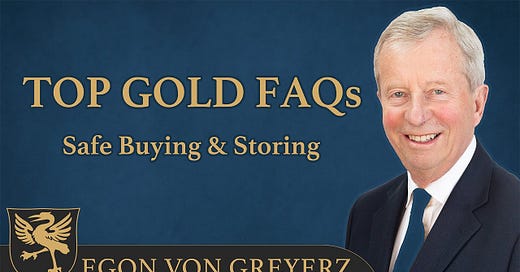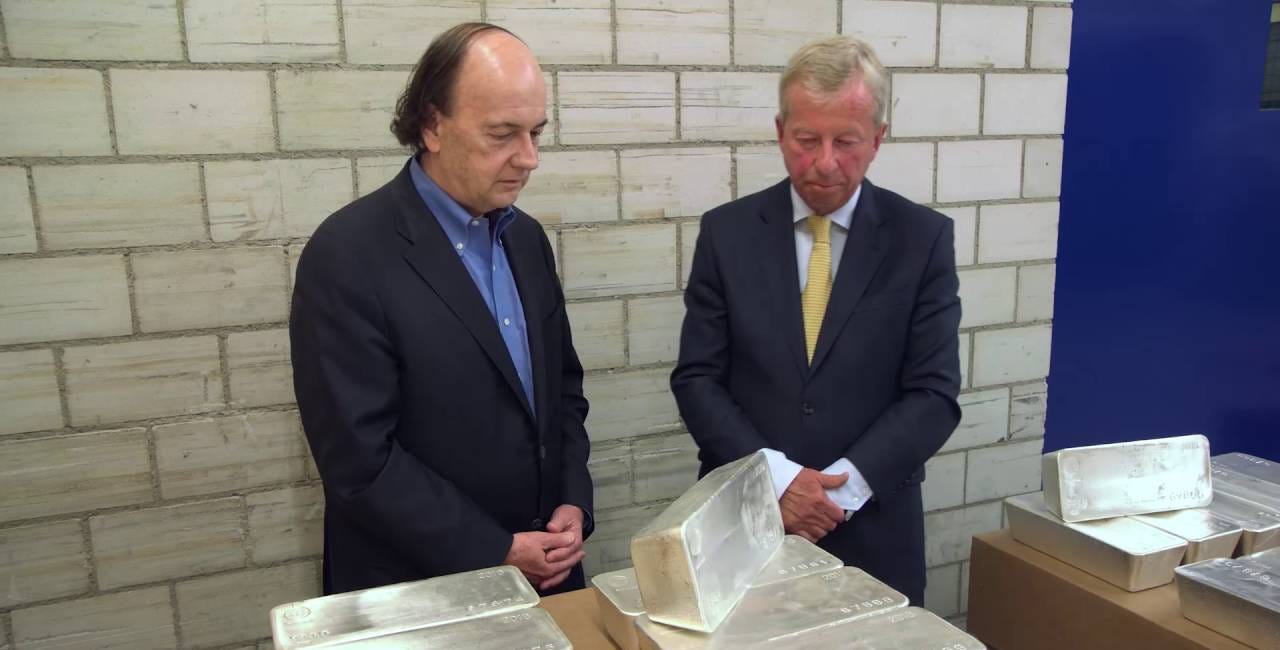In this insightful video, Egon von Greyerz, founder of VON GREYERZ, answers the most frequently asked questions about owning physical gold. He explains how to choose a reputable gold dealer, how much gold to hold as part of a wealth preservation strategy, and why storing it in secure jurisdictions like Switzerland and Singapore is essential.
True wealth preservation comes from owning fully segregated, serial-numbered physical gold stored outside the banking system in secure, stable jurisdictions.
From understanding the risks of ETFs and gold funds, to navigating cross-border gold transport, to the pros and cons of mining stocks versus physical bars — this is a comprehensive guide for serious investors. Egon also emphasizes the importance of direct ownership with serial-numbered bars stored outside the banking system for true financial sovereignty.
0:00 – What is a “Reputable Dealer”?
Must have at least 10 years in business.
Proven, experienced management — not necessarily from the gold industry, but with a solid professional background.
Undergoes financial and compliance audits by top-tier firms (e.g., KPMG, PwC).
0:58 – Why is it Hard to Identify Reputable Dealers?
Many online dealers make bold claims.
Audits and regulatory oversight are essential ways to differentiate.
1:50 – What Percentage of Gold Should You Own?
Recommends at least 50% of liquid assets in gold.
Gold has outperformed other asset classes over the past 25 years.
Ultimately, invest what you're comfortable with.
2:22 – When Should You Sell Gold?
Only when governments run surpluses, stop printing money, and reduce debt — which is highly unlikely.
Gold should be held long-term, potentially for decades.
3:00 – What’s the “Perfect Gold Solution”?
Three pillars:
Reputable, experienced company.
Safest vaults in top jurisdictions (Switzerland, Singapore).
Direct access to your gold — physically verifiable with serial numbers.
3:40 – Should One Trust Sprott?
Sprott is reputable, with trustworthy figures like Eric Sprott and Rick Rule.
However, storing gold via funds/trusts doesn't give you direct access or personal control.
Storage at Canada’s Royal Mint is government-held — not ideal for wealth preservation.
4:30 – Can You Buy Gold from a Local Bank?
Used to be common, especially in Switzerland.
Not anymore — banks rarely sell gold today and generally lack understanding of it.
Use specialized, reputable gold dealers instead.
5:01 – Can You Cross Borders with Gold?
Rules vary by country.
EU threshold: ~€10,000 worth without declaration (subject to change).
Best practice: use insured, professional transport services — don’t carry it yourself.
5:35 – What About the GLD ETF?
GLD and other ETFs are paper gold, not physical.
No ability to take delivery or verify the gold.
Potential rehypothecation risks (same gold lent multiple times).
Not ideal for wealth preservation.
6:11 – What’s the Deal with Serial Numbers and Client Names?
Physical gold bars have serial numbers and are registered to the client's name.
Warehouse receipts list bar numbers, weights, and type — ensures ownership.
Paper gold doesn't offer this security or transparency.
6:47 – Mining Stocks vs Physical Gold
Mining stocks are undervalued and may outperform gold short-term.
But they come with risks: political, financial, and market exposure.
Physical gold is safer for long-term wealth preservation — outside the financial system.
Ensuring Authenticity: What Makes Gold & Silver Bars Unique and How to Avoid Fakes
What makes every single 1000 ounce silver bar unique
THE BIGGEST PRIVATE GOLD VAULT IN THE WORLD
This video takes place inside the world’s largest private gold vault, where gold is stored for wealthy families, institutions, private banks, and even central banks. The vault is located deep within a mountain and is accessible only through multiple high-security zones. It is uniquely designed to withstand nuclear bombs, earthquakes, and gas attacks, making it the most secure facility of its kind in the world.















Share this post